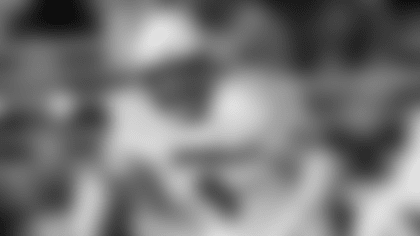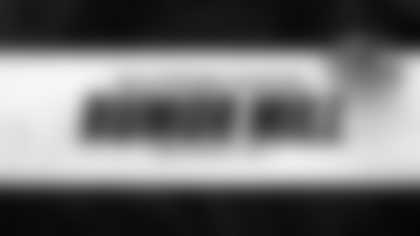Changes are underway to the NFL rule book.
The league announced Tuesday afternoon that the owners voted to approve seven new rules during the league meetings in Boca Raton, Fla.
The most notable changes are that all chop blocks are now illegal, and the line of scrimmage on an extra point will be permanently moved to the 15-yard line. The league moved back the extra points last year on a one-year trial basis, but decided to make it permanent after deeming the experiment successful.
The approval of the seven new rules Tuesday is just a portion of the rules proposals up for vote this year, the ownership will vote on the rest Wednesday morning.
Ravens Head Coach John Harbaugh made it clear during Tuesday's AFC coaches breakfast that he was not in favor of eliminating the chop block, which is a key piece in the stretch-zone running scheme Baltimore runs.
"Teams have been running the stretch-zone scheme for years," Harbaugh said. "Look at Denver. Look at Houston. It's a great finesse run play."
In the NFL's presentation to the media Monday, NFL Vice President of Officiating Dean Blandino explained from his perspective why he thought the chop block should be illegal. Blandino showed a piece of video from the Seattle Seahawks to illustrate his point, and in that play the left guard for Seattle took a nasty shot at the knees of the defensive lineman while the defender was getting blocked by the center.
"Based on a few of the clips that they put in there by one team, that posting and cutting people's knee, that could be cleaned up real simply by getting that team to stop doing that technique," Harbaugh said.
Harbaugh explained that when cut blocking is done properly, the defenders are not at risk of serious injury. He also pointed out that other running schemes could lead to other types of injuries.
"The other two types of runs in the game are basically power runs and lead runs," Harbaugh said. "A power run is a down scheme and a kickout scheme. The ball is designed to go in one or two gaps. That draws everybody's attention right to that gap. So if I'm a fullback or guard, I'm going to kickout Terrell Suggs as the outside linebacker. Terrell Suggs knows that, so he's going to come crashing down there and smash that guard or fullback as hard as he can. That's a collision.
"A lead play is where a fullback, or a tight end, lines up in the backfield and his job is to hit that linebacker head-on-head. That's an [isolation]. Those are head banging plays."
A result that could come from the elimination of chop blocks is that running the ball may become much more difficult for teams trying to use the stretch-zone scheme. Coaches have pointed out that cut blocking defensive linemen keeps them from holding at the line of scrimmage, but now they could have more free reign to hold up their blockers.
"Defensive linemen don't want it because they don't want to have to worry about the cut block," Harbaugh said. "They want to hold onto that center and pull themselves through, so two guys are free runners to go hit the back. That cut block on the back side protects the running back from getting smashed in the side of the head from backside pursuit. And it does not put the defensive linemen in any kind of danger, unless it is done as a post and a cut – which if you told that one team, 'That's out, you're going to get called for that. Don't do it anymore.' – we wouldn't have this conversation."
In addition to the elimination of the chop block and moving back the extra point, here are the other rules that were approved Tuesday:
- Permits the offensive and defensive play callers on the coaching staffs to use the coach-to-player communication system regardless of whether they are on the field or in the coaches' booth.
- Expands the horse collar rule to include when a defender grabs the jersey at the name plate or above and pulls a runner toward the ground.
- Makes it a foul for delay of game when a team attempts to call a timeout when it is not permitted to do so.
- Eliminates the 5-yard penalty for an eligible receiver illegally touching a forward pass after being out of bounds and re-establishing himself inbounds, and makes it a loss of down.
- Eliminates multiple spots of enforcement for a double foul after a change of possession.



















